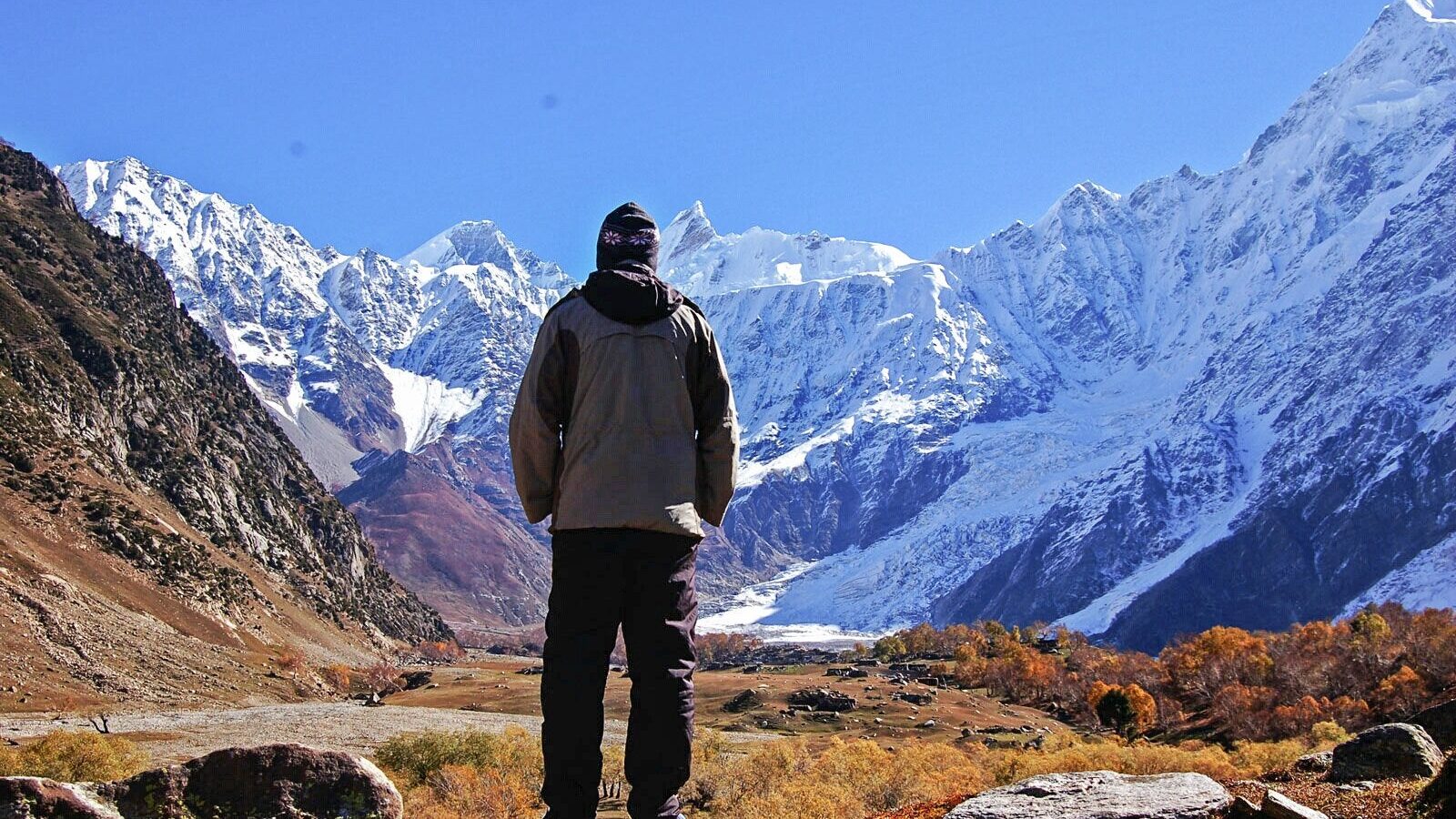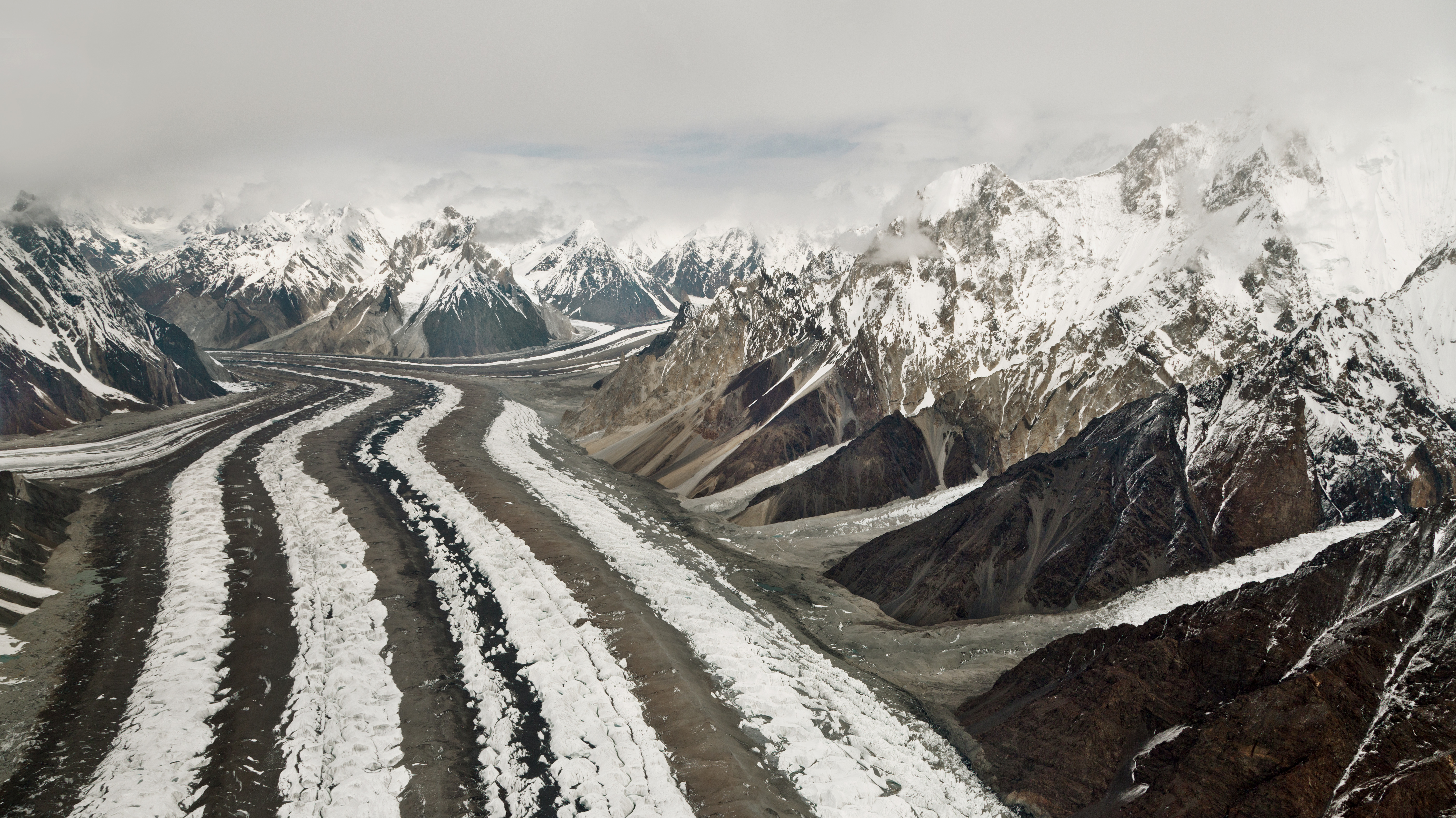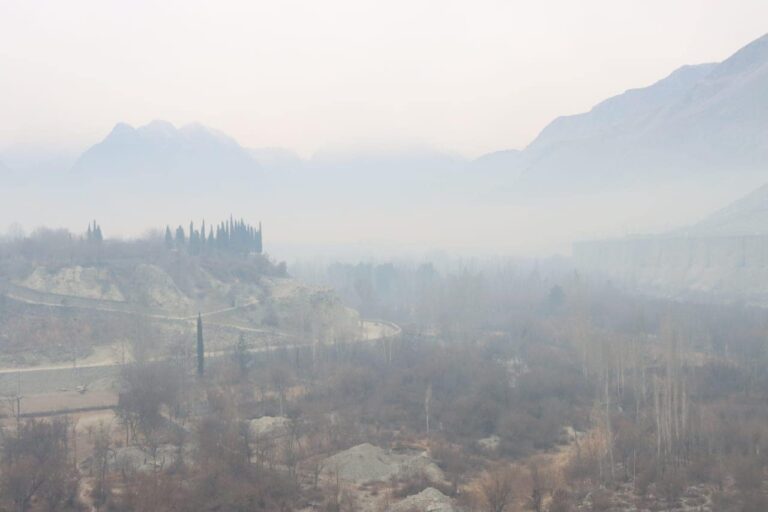Imagine a place where mountains touch the sky, their snow-capped peaks reflecting sunlight in an almost magical glow. These towering giants have safeguarded glaciers for millennia, creating an eternal balance between nature and human life. Gilgit-Baltistan, nestled among the mighty Karakoram and Himalayan ranges, is one such region—a land of pristine beauty, biodiversity, and cultural richness. However, this paradise is under threat. Glaciers that have stood frozen for centuries are now melting at an alarming pace, jeopardizing the lives and livelihoods of millions who depend on them. For the people of Gilgit-Baltistan, the story of their land is turning into a tale of survival against the silent disaster of climate change.

Climate Change Incident
In May 2022, this threat became devastatingly real for the people of Hassanabad. A glacial lake burst its natural dam, unleashing a torrent of water that swept through their lives with unforgiving force. The flood demolished homes, erased vital bridges, and left entire communities isolated from the outside world. Families lost not only their homes but also their sense of security, watching helplessly as their livelihoods were washed away. This wasn’t a rare or freak occurrence but rather one of many wake-up calls echoing across the region. Climate change has accelerated glacial melt, creating volatile conditions where once-stable glaciers now threaten to unleash destruction without warning.
The global rise in temperatures—an increase of 1.2°C since the industrial revolution—has left its harshest marks on the mountains. Glaciers in the Hindu Kush-Himalaya region, often called the “Third Pole,” are losing approximately one meter of ice thickness every year. Gilgit-Baltistan, which boasts the largest collection of non-polar glaciers on Earth, is witnessing these majestic frozen reservoirs retreat and transform. Between 1990 and 2018, glacial lakes in the region grew by 47%, creating numerous unstable reservoirs of meltwater. Scientists have identified many of these lakes as high-risk, prone to sudden outbursts capable of causing immense destruction downstream. As glaciers retreat, the very foundations of life in Gilgit-Baltistan are crumbling, leaving the region increasingly vulnerable to both natural and human-induced challenges.
Major Incidents in Gilgit-Baltistan
In 2015, the serene landscapes of Gilgit-Baltistan witnessed one of the most catastrophic events in its recent history. A glacial lake outburst in Attabad sent shockwaves through the region, displacing 25,000 people and transforming tranquil villages into watery graves. Entire communities were submerged under the floodwaters, and the once-calm Hunza River turned into a raging torrent that swept away everything in its path. Survivors painted haunting pictures of the devastation, recounting how their protective mountains—symbols of stability and safety—became agents of destruction. Families watched helplessly as their homes, fields, and centuries-old way of life were obliterated in mere hours.

This tragic event was not an isolated anomaly but part of a growing pattern. Since then, the frequency of glacial lake outbursts has surged, driven by accelerating glacial melt linked to climate change. Every summer brings new fears of floods, with local communities forced to remain on high alert. The region’s delicate balance between glaciers, rivers, and settlements is unraveling under the pressure of rising temperatures. Experts predict an even graver future: if the current trajectory of climate change continues unchecked, over 30% of the region’s glaciers could vanish by 2100. This loss would not only reshape the physical landscape but also trigger profound social, economic, and ecological consequences that the region is ill-equipped to handle.
Impacts on Communities and Wildlife
The glaciers of Gilgit-Baltistan are more than just frozen reservoirs of water; they are the lifeline for nearly 7 million people. These icy behemoths feed rivers and streams that sustain agriculture, provide drinking water, and support industries across the region. However, as glaciers retreat at an unprecedented rate, this critical water source is dwindling. The resulting water scarcity is hitting the region’s agrarian economy hard, with unpredictable irrigation cycles leaving farmers at the mercy of erratic weather patterns. Reports suggest that crop yields have declined by as much as 30% in some areas, undermining food security and pushing many families to the brink of poverty. The cultural and economic rhythms tied to agriculture are being disrupted, creating a ripple effect that extends far beyond the fields.
The impacts are not confined to human communities alone. Gilgit-Baltistan is a haven for diverse wildlife, hosting species that have adapted to its unique and often harsh environment. But as the glaciers shrink, the ecosystems they support are unraveling. Shrinking habitats are driving species toward extinction, with an alarming 30% of the region’s fauna at risk of disappearing forever. The loss of these species disrupts the intricate ecological balance that has sustained life in the mountains for millennia. Birds, mammals, and plant species are struggling to adapt to rapid changes, and their decline has cascading effects on the entire ecosystem. For Gilgit-Baltistan, the retreat of glaciers is not merely an environmental issue; it is a humanitarian and ecological crisis that threatens the very fabric of life in the region.
Governance and Challenges
The climate crisis in Gilgit-Baltistan is exacerbated by significant governance issues, turning an environmental challenge into a multifaceted disaster. Ineffective governance systems fail to address the region’s unique vulnerabilities, leaving communities exposed to the perils of floods, landslides, and glacial lake outbursts. Disaster management frameworks are rudimentary at best, lacking the infrastructure and planning necessary for timely interventions and mitigation. For residents living in flood-prone areas, this means enduring the yearly cycle of destruction with little hope of support or recovery.
Tourism, often seen as a potential driver of economic development, has also become a double-edged sword. Poorly planned tourism infrastructure—such as unregulated construction of hotels and roads in fragile ecosystems—has led to the degradation of natural habitats. Studies indicate a 15% decline in biodiversity in areas subjected to high tourist activity, as these ecosystems struggle to cope with the human footprint. The influx of visitors, combined with a lack of ecological awareness, further strains resources and destabilizes already fragile environments.
Compounding these issues is a significant gap in climate education, both among local communities and policymakers. Many people remain unaware of the direct impacts of climate change on their livelihoods and the natural systems around them. Without widespread understanding, efforts to combat climate change or adapt to its effects lack the coordination and urgency needed. This absence of knowledge and preparedness creates a vicious cycle of inaction, leaving Gilgit-Baltistan increasingly vulnerable to the accelerating climate crisis.

Solutions and Path Forward
Despite the challenges, Gilgit-Baltistan’s future is not without hope. Several viable solutions could pave the way for sustainable development and environmental resilience:
- Community-Led Initiatives:
Empowering local communities to take charge of environmental preservation has proven effective in certain parts of Gilgit-Baltistan. For example, targeted reforestation projects have increased forest cover by an impressive 25% in some areas, stabilizing soil and reducing the risk of landslides. These efforts not only restore ecosystems but also create opportunities for local employment and community involvement. Expanding such initiatives, with a focus on education and capacity-building, can further enhance resilience against climate-related challenges. - Sustainable Tourism:
By adopting eco-tourism practices, Gilgit-Baltistan can strike a balance between economic growth and environmental protection. Eco-tourism prioritizes preserving natural habitats while offering visitors meaningful experiences. Responsible tourism practices, such as limiting visitor numbers in sensitive areas and promoting environmentally friendly accommodations, could increase local revenue by as much as 30%. Encouraging tourists to respect the region’s unique ecosystems while supporting local businesses would ensure that economic benefits do not come at the expense of the environment. - Improved Governance and Disaster Management:
Strengthening governance structures is critical to mitigating the effects of climate change. Comprehensive policies and improved disaster management systems could reduce vulnerability to climate-related disasters by up to 40%. This includes early warning systems for floods and landslides, better land-use planning, and investment in resilient infrastructure. A robust climate action plan, tailored to the region’s specific needs, is essential for long-term sustainability. - International Support:
Gilgit-Baltistan’s challenges require global collaboration, as the region’s glaciers are not just local resources but critical components of the global climate system. International partnerships can bring much-needed funding, technology, and expertise to implement large-scale mitigation and adaptation projects. Successful initiatives in similar regions have demonstrated a 50% reduction in disaster risks through such collaborations. Establishing these connections could provide the tools and resources necessary for Gilgit-Baltistan to address its climate challenges effectively.
- Glacial Preservation Efforts:
Protecting the glaciers of Gilgit-Baltistan is crucial for the region’s water security and ecological stability. Studies warn of a potential 70% decline in water supply from glaciers by 2050 if melting continues at the current pace. This dire prediction underscores the urgency of implementing glacial preservation efforts, such as limiting activities that contribute to warming, regulating water use, and adopting innovative techniques to slow glacier retreat. These measures, combined with sustainable water management strategies, could help mitigate the looming water crisis.
Conclusion
Gilgit-Baltistan is not just a picturesque region of towering mountains and pristine glaciers; it is a vital lifeline for Pakistan and a testament to the delicate balance of nature. However, this breathtaking landscape is increasingly vulnerable to the devastating impacts of climate change. The rapid melting of glaciers threatens to unravel the environmental, economic, and social fabric of the region. As these glaciers shrink, they jeopardize water security for millions of people, disrupt agricultural systems, and put livelihoods at risk—not only in Gilgit-Baltistan but throughout Pakistan, which relies heavily on the Indus River system fed by these glaciers.
The crisis unfolding in Gilgit-Baltistan is a stark reminder of the interconnectedness of climate systems and the far-reaching consequences of inaction. Yet, it is not a story of inevitable doom. There is immense potential to turn the tide through a combination of community-led initiatives, sustainable practices, and effective governance. Empowering local populations with knowledge, resources, and decision-making power can foster resilience and innovation at the grassroots level. Likewise, adopting eco-tourism and environmentally conscious development can strike a balance between economic growth and ecological preservation, ensuring that the region’s natural beauty and biodiversity remain intact for future generations.
Effective governance is the linchpin of this transformation. Policymakers must rise to the challenge by formulating and implementing comprehensive climate action plans tailored to the region’s unique vulnerabilities. Disaster management systems need to be overhauled, and education campaigns must raise awareness about the impacts of climate change. Moreover, global collaboration is essential. The glaciers of Gilgit-Baltistan are not merely local assets but critical components of the global climate system. International partnerships can bring in funding, expertise, and technology to mitigate the challenges and bolster adaptive capacity.
Preserving Gilgit-Baltistan is more than an environmental imperative—it is a moral responsibility. This majestic region holds the promise of a sustainable future, not only for its own inhabitants but for millions who depend on its natural resources. Protecting its fragile ecosystems ensures the survival of countless species, maintains the region’s cultural heritage, and secures the livelihoods of its people.
The road ahead is not without obstacles, but it is a path that must be taken. The challenges of climate change are vast, but so too are the opportunities for innovation, collaboration, and resilience. Gilgit-Baltistan’s future lies in the hands of its people, its policymakers, and the global community. Together, they can ensure that this stunning region continues to thrive as a beacon of natural beauty and environmental sustainability for generations to come.




